Endoscopic facial operations are usually performed on patients whose facial structures such as eyebrows, temples, and cheeks are displaced downwards, although the elasticity of the skin is not lost. On occasion, it can be performed for patients with weak structural midface support or who complain of a tired appearance due to the lower location of the eye corners and eyebrows. This method alone cannot correct serious deformities in the neck and chin area. If there is also sagging in the neck, an additional procedure may be required.
Ameliyat Hazırlığı
Hastanın detaylı muayenesi ilk ve en önemli adımdır. Hastanın genel durumu, eşlik eden hastalıkları, kullandığı ilaçlar, beklentilerinin gerçekçi olup olmadığı bizim için en önemli noktalardır. Ameliyat öncesi hazırlık için anestezi uzmanı ile birlikte detaylı muayene şarttır. Hasta sigara içiyorsa 3 hafta önceden bırakması, kan sulandırıcı ilaçların belirtilen süreden önce kesilmesi önerilir. Ameliyat öncesi planlama cerrahi hazırlıkta önemli bir adımdır.
Ameliyat Yöntemi
İşlem genellikle ışıklı bir kamera kullanılarak yapıldığı için kesiler küçük olmaktadır. Kesiler saçlı derinin içerisinde bazen ağız içinde nadiren de alt göz kapağında olabilmektedir.
Endoskopik olarak yapılan bu işlemlerde kaş, şakak, alın, orta yüze (yanak) ayrı ayrı veya kombine olarak müdahale edilebilir. Yer çekimi ile birlikte aşağı doğru sarkmış bu yapılar yukarıya asılır.
İyileşme Süreci
On average, the stitches are removed in 10 days, during which oedema on the face will be significantly regressed. Nevertheless, it can take months for the tissues to settle and oedema to fully pass. If necessary, some tapes can be used to reduce swelling. The pain is not very severe, usually at a level that can be relieved with painkillers. In early periods, there may be some numbness due to tension. It’s mostly temporary. As with any surgery, there is a risk of complications during endoscopic facial surgery. Some of these may require revision surgery attempts.

